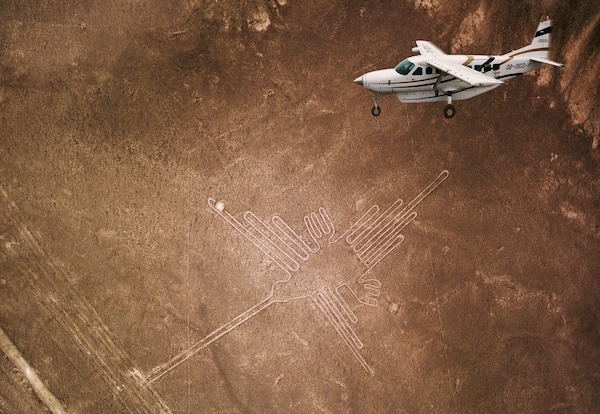3 min to read
On Architecture, System Thinking & the Nazca Lines

Legend has it that Bill Gates was the first self proclaimed software architect. Then the fad caught on and the rest is history. Everyone wants to now be part of this selective fraternity. So much so that it is hard to fling a brick in an IT unit without inflicting material harm to at least some person who goes around town proclaiming his membership to this esoteric club. It is hard to distinguish between the true cognoscenti and the dumb wannabes. But who is this person? What distinguishes the average Jo Developer from an architect?
I like to think of architects as “system thinkers”.
One fundamental difference between system thinkers and the proletariat boils down to the difference in exposure. The system thinker sees the entire landscape whilst the rest of the folks are content to focus on the details. In short, the system thinker conceptualizes the whole forest whilst Jo Developer (or worker) concentrates on the trees. This is mostly due to the fact that Jo Developer has not hung around long enough to know the whole landscape well. It is somewhat relieving to me as I am increasingly becoming an old fossil that experience counts somewhere.
Look at the Nazca Geoglyphs for instance. In what may be called as the greatest scratch pad on earth, there were lines that were observed that stretched for several hundred kilometers. Large figures were drawn that could stretch a total area in excess of 500 square kilometers. Whoever has chosen this site chose it well. It is windless and dry and is easy to work with. The marks left were indelible due to the nearly windless atmosphere that is there in the Nazca plateau. By looking at these lines, an unseen architect is inferred. What looked like random lines covering vast territorial tracts turn out to be giant figures that are only evident after an aerial inspection of the region. Who designed these lines? And who had the wisdom to choose this particular area for drawing these mysterious figures?
The Nazca lines may be a mystery. But they sure help to demystify the role of a software architect. The developers produce the “lines” so to speak while the architect sketches out the entire landscape. Without the architect the lines would just turn out to be random lines. The architect has made them works of esoteric art. While the developers were working on their specs to produce the lines, the architect had conceptualized how the landscape would look.
So the architect - from the preceding discussion - conceptualizes the whole while the developer just makes the parts happen. But why choose this particular place in the Nazca plateau for drawing these figures? As we said before the place produces a perfect canvas for portrayal of of these drawings. Rainfall is extremely little and it is easy to create the lines. So these forms are easy to create and can be preserved for posterity to admire. So is the person who chose this place an architect as well? I would tend to think so though I would call this person more like an “infrastructure architect” rather than a designer. So system thinking at several levels and different aspects is required to make many of these things happen.
I am increasingly using viewpoints and perspectives to document architecture. I consider the “canvas” view and the “animal design” view as two views emanating from two different view points on the same architecture. This only goes onto prove the old and somewhat cliched aphorism that there is a lot to learn from our past!



Comments